
The Rank Organisation, was a British entertainment conglomerate founded by industrialist J. Arthur Rank in April 1937, Rank also served as the company chairman. It quickly became the largest and most vertically integrated film company in the United Kingdom, owning production, distribution and exhibition facilities as well as manufacturing projection equipment and chairs. It also diversified into the manufacture of radios, TVs and photocopiers. The company name lasted until February 1996, when the name and some of the remaining assets were absorbed into the newly structured Rank Group plc. The company itself became a wholly owned subsidiary of Xerox and was renamed XRO Limited in 1997.
Amicus Productions was a British film production company, based at Shepperton Studios, England, active between 1962 and 1977. It was founded by American producers and screenwriters Milton Subotsky and Max Rosenberg.
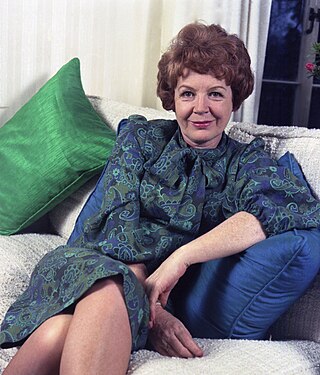
Phyllis Hannah Murray-Hill, known professionally as Phyllis Calvert, was an English film, stage and television actress. She was one of the leading stars of the Gainsborough melodramas of the 1940s such as The Man in Grey (1943) and was one of the most popular movie stars in Britain in the 1940s. She continued her acting career for another 50 years.

The Arsenal Stadium Mystery is a 1939 British mystery film and one of the first feature films wherein football is a central element in the plot. The film was directed by Thorold Dickinson, and shot at Denham Film Studios and on location at the original Arsenal Stadium in Highbury. It was written by Dickinson, Donald Bull, and Alan Hyman, adapted from a 1939 novel by Leonard Gribble.
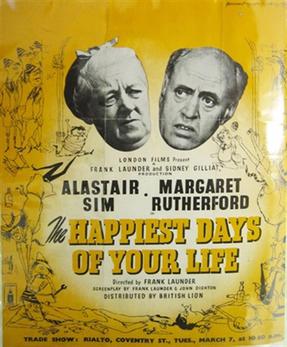
The Happiest Days of Your Life is a 1950 British comedy film directed by Frank Launder, based on the 1947 play of the same name by John Dighton. The two men also wrote the screenplay. It is one of a stable of classic British film comedies produced by Frank Launder and Sidney Gilliat for British Lion Film Corporation. The film was made on location in Liss and at Riverside Studios, London. In several respects, including some common casting, it was a precursor of the St. Trinian's films of the 1950s and 1960s.

Jean Kent, born Joan Mildred Field was an English film and television actress.

The Next of Kin, also known as Next of Kin, is a 1942 Second World War propaganda film produced by Ealing Studios. The film was originally commissioned by the British War Office as a training film to promote the government message that "Careless talk costs lives". After being taken on by Ealing Studios, the project was expanded and given a successful commercial release. After the war and up until at least the mid 1960s, services in British Commonwealth countries continued to use The Next of Kin as part of security training. The film's title is derived from the phrase "the next of kin have been informed" as used by radio announcers when reporting on the loss of personnel in action.
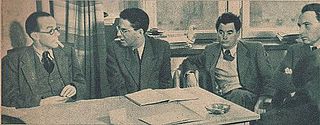
Basil Wright was a documentary filmmaker, film historian, film critic and teacher.
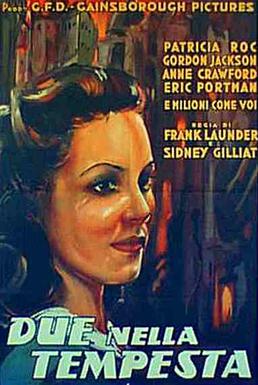
Millions Like Us is a 1943 British propaganda film, showing life in a wartime aircraft factory in documentary detail. It starred Patricia Roc, Gordon Jackson, Anne Crawford, Basil Radford, Naunton Wayne, Moore Marriott and Eric Portman.
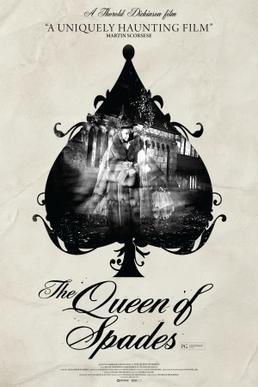
The Queen of Spades is a 1949 British fantasy-horror film directed by Thorold Dickinson and starring Anton Walbrook, Edith Evans and Yvonne Mitchell. It is based on the 1834 short story of the same name by Alexander Pushkin.

Thorold Barron Dickinson was a British film director, screenwriter, film editor, film producer, and Britain's first university professor of film. Dickinson's work received much praise, with fellow director Martin Scorsese describing him as "a uniquely intelligent, passionate artist... They're not in endless supply."
Edward Black was a British film producer, best known for being head of production at Gainsborough Studios in the late 1930s and early 1940s, during which time he oversaw production of the Gainsborough melodramas. He also produced such classic films as The Lady Vanishes (1938). Black has been called "one of the unsung heroes of the British film industry" and "one of the greatest figures in British film history, the maker of stars like Margaret Lockwood, James Mason, John Mills and Stewart Granger. He was also one of the very few producers whose films, over a considerable period, made money." In 1946 Mason called Black "the one good production executive" that J. Arthur Rank had. Frank Launder called Black "a great showman and yet he had a great feeling for scripts and spent more time on them than anyone I have ever known. His experimental films used to come off as successful as his others."

Where No Vultures Fly is a 1951 British adventure film directed by Harry Watt and starring Anthony Steel and Dinah Sheridan. It was released under the title Ivory Hunter in the United States. The film was inspired by the work of the conservationist Mervyn Cowie. The film's opening credits state that "the characters in this film are imaginary, but the story is based on the recent struggle of Mervyn Cowie to form the National Parks of Kenya." The title Where No Vultures Fly denotes areas where there are no dead animals. The film has a sequel, West of Zanzibar.

Caravan is a 1946 British black-and-white drama film directed by Arthur Crabtree. It was one of the Gainsborough melodramas and is based on the 1942 novel Caravan by Eleanor Smith.

Piccadilly Incident is a 1946 British drama film directed by Herbert Wilcox and starring Anna Neagle, Michael Wilding, Coral Browne, Edward Rigby and Leslie Dwyer.
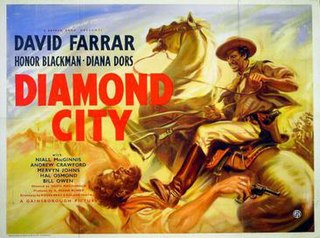
Diamond City is a 1949 British drama film directed by David MacDonald and starring David Farrar, Honor Blackman, Diana Dors and Niall MacGinnis.
Sidney Henry Cole was a British film and television producer. Earlier in his career he worked as a film editor.

Madness of the Heart is a 1949 British drama film directed by Charles Bennett, produced by Richard Wainwright for Two Cities Films and starring Margaret Lockwood, Maxwell Reed, Kathleen Byron and Paul Dupuis. The screenplay was written by Charles Bennett, adapted from the novel of the same name by Flora Sandström.
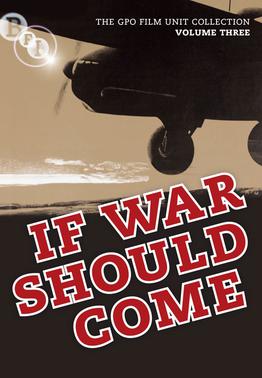
Men of the Lightship is a short propaganda film produced by the Crown Film Unit for the British Ministry of Information in 1940, the year after the beginning of the Second World War. It dramatises the bombing of the East Dudgeon lightship by the Luftwaffe on 29 January 1940 and was designed to portray Germany as a barbaric enemy. An opening narration explains the traditional understanding of lightships as neutral vessels during war.
Westward Ho! is a 1940 British public information film about the evacuation of children during the Second World War, directed by Thorold Dickinson. At the time, evacuation was a controversial policy, and the film was produced with the aim of building support for it. Westward Ho! was the first of a series of five-minute propaganda films distributed weekly to cinemas between 1940 and 1942.
















